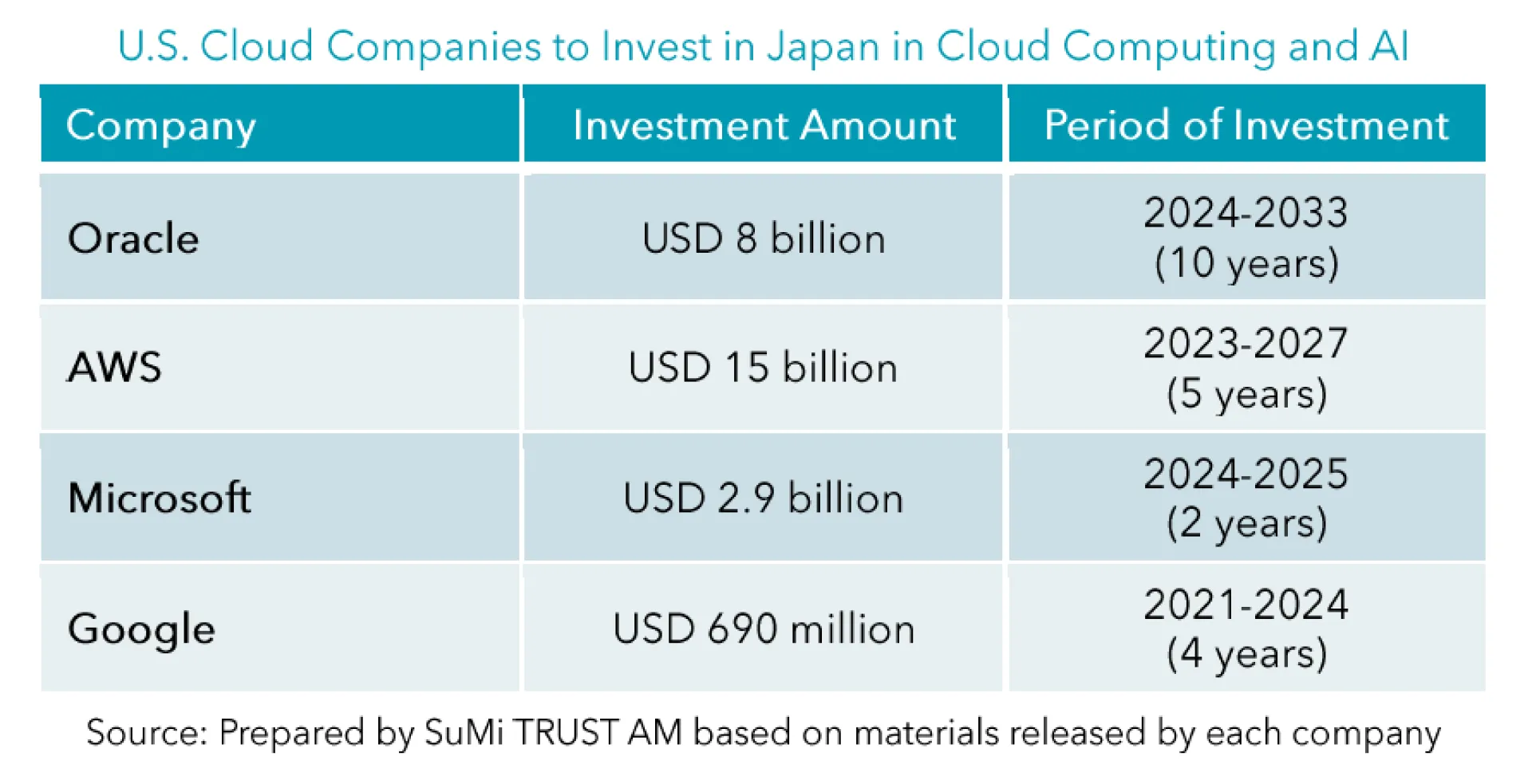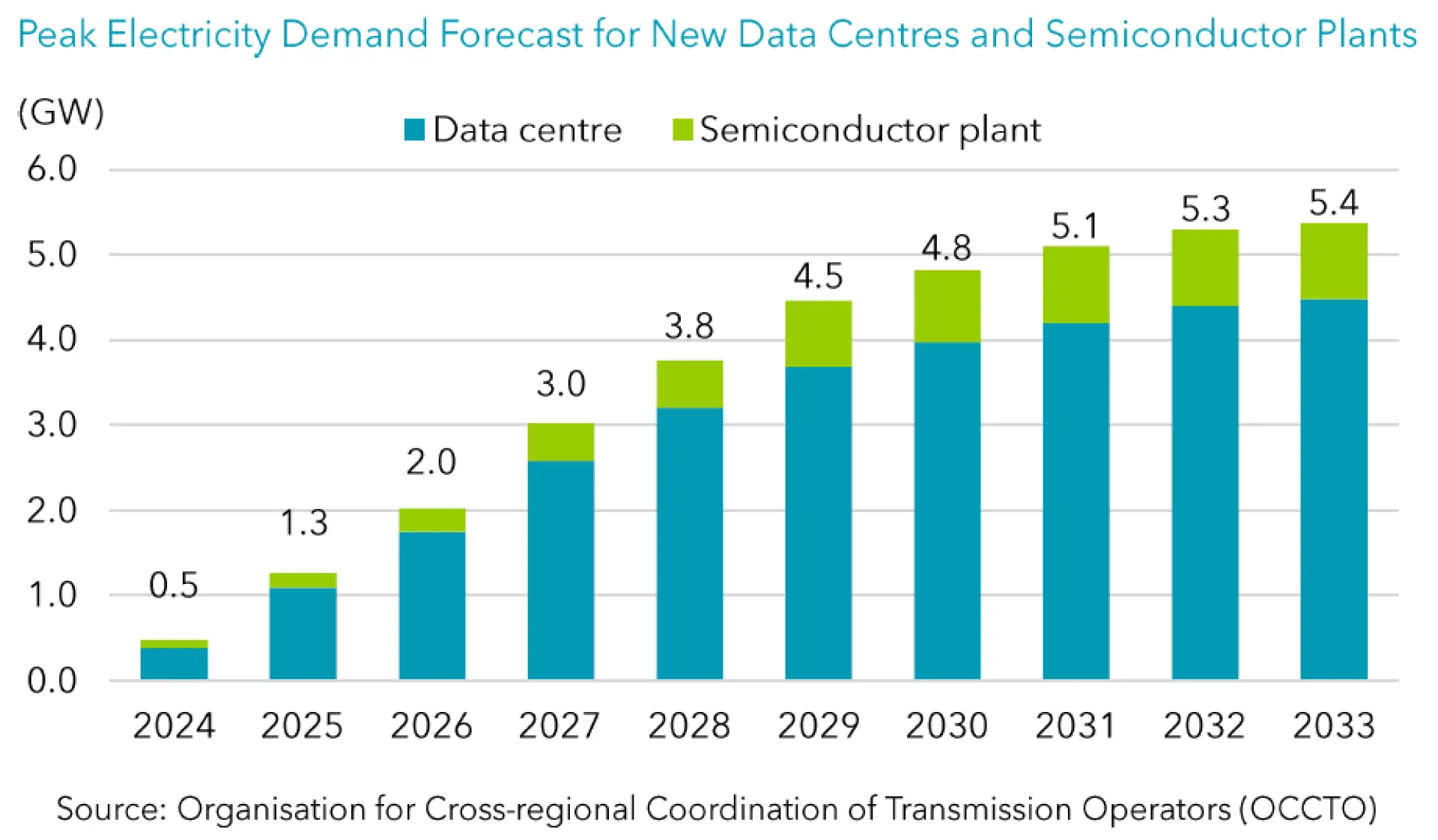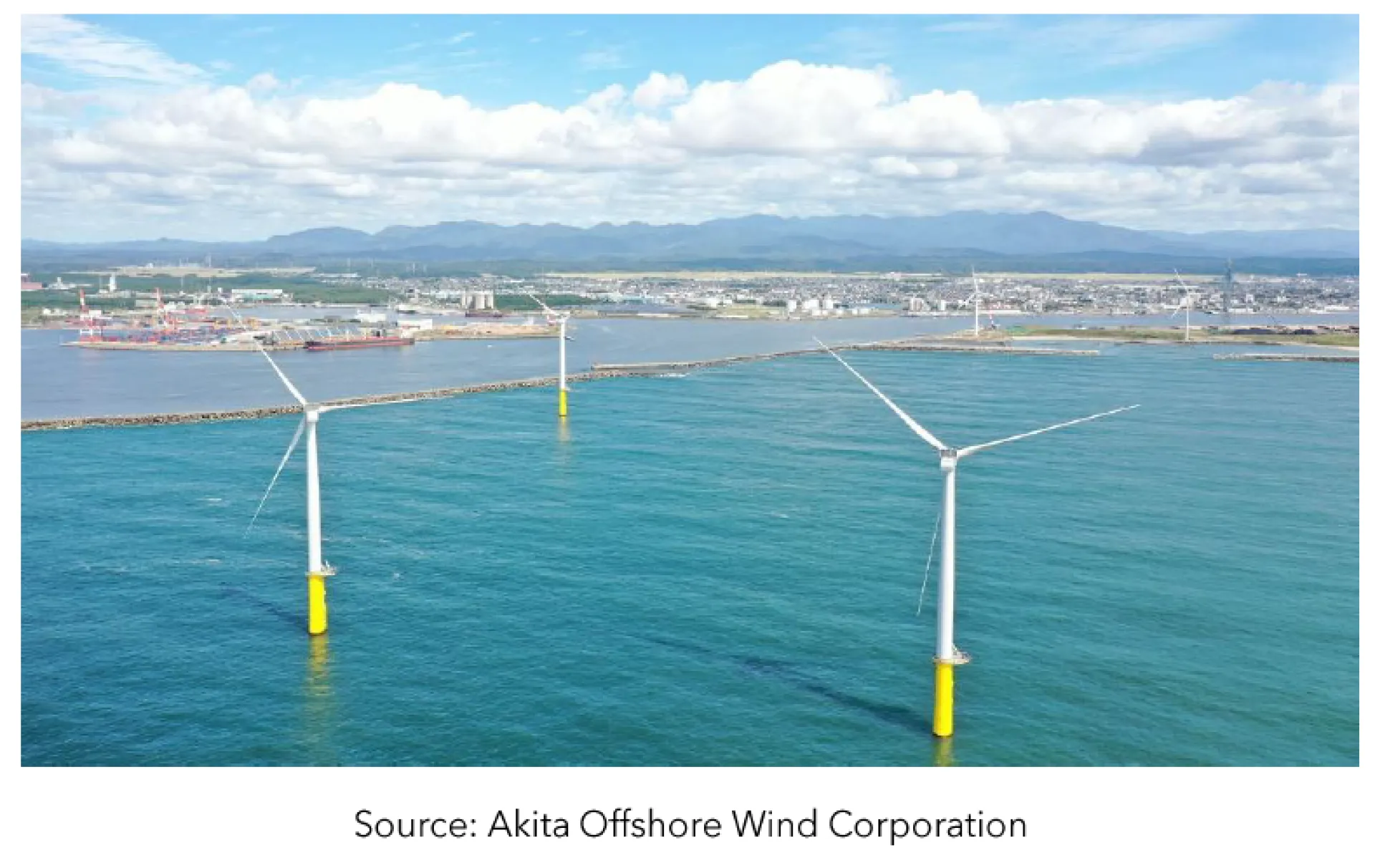
Digital transformation (DX) in Japan is driving this data centre rush, with growing momentum to tackle social challenges such as the low birth-rate and an aging society through digitalisation and new IT business models. In particular, the rapid adoption of Artificial Intelligence (AI) in Japan has been remarkable.
Mega cloud service providers such as AWS, Google and Microsoft are rushing to build huge “hyperscale data centres” to meet rapidly growing demand related to generative AI, as Japanese companies generally use internet-based cloud services to access AI services. The IT research firm IDC Japan forecasts that demand for hyperscale data centres by the end of 2045 will be approximately four times greater than domestic capacity in 2023. In response, a series of data centres are being built in Inzai City, Chiba Prefecture, to meet this huge demand.
It is not only AI driving this wave of data centre construction, but also a government push for digitisation in public institutions. Global media outlets have previously reported on the fact that Japan has been slow to lose old technology such as floppy disks, but the problem of aging technology is driving demand to quickly update IT systems and data centres developed during the so-called dotcom bubble which are now more than 20 years old.
The impact of data centre construction on the local economy
Data centres require an ecosystem to operate smoothly. They are not simply large buildings with a row of servers installed, but require advanced security measures, reliable operations and must also be disaster-proof in a country like Japan that experiences natural disasters on a regular basis. The construction of a single data centre involves an investment of tens of billions of yen in buildings and equipment, and provides new employment opportunities for local technicians and engineers, as personnel with specialised skills and knowledge will be needed to run the data centre in the long term.
Therefore, data centres strengthen the infrastructure of the local economy, which means that general infrastructure such as water and roads, as well as electricity, which are all essential for data centre operations will be enhanced. Furthermore, data centres also promote the development of advanced communications infrastructure, such as fibre optics, which leads to an improvement in the business environment for companies in the surrounding area. Therefore, a data centre becomes a catalyst for revitalising the entire regional business ecosystem through the development of related industries and stimulation of new start-ups.
More data centres, more power shortages?
It is well known that data centres consume large amounts of power. As well as consuming electricity to run high-performance servers, they also require large amounts of power to cool the heat generated by the equipment. It is estimated that ChatGPT answering one question uses ten times as much electricity as one Google search, and power consumption will swell further as services related to generative AI become more prevalent. As large-scaled data centres operate 24/7, it has been reported that they consume 10 times more electricity than the average office building.

According to forecasts by the Organisation for Cross-regional Coordination of Transmission Operators (OCCTO), peak electricity demand in Japan related to data centres will increase from 0.5 GW in 2024 to 5.4 GW in 2033. In Japan, where it is difficult to build new nuclear power plants, securing the ever-increasing electricity demand for data centres at a reasonable price is a pressing issue. In response, there is a growing push to utilise renewable energy sources with a view to carbon neutrality in the future and mitigate the risk of power shortages.
Data centres working together with rural cities for renewable energy development
Akita Prefecture, located on the north-western side of Japan’s island of Honshu, is keen to promote renewable energy, and is also aiming to attract data centres that will commit to utilising the prefecture's abundant renewable energy. The prefecture is ahead of the rest of the country in its offshore wind power project planning and is focusing its attention on supplying renewable energy to data centres in addition to factories and research centres, all of which require a large amount of power.

Like Akita Prefecture, this magnetic combination of data centres and renewable energy is something that can only be found outside of major hubs like Tokyo and Osaka. In these rural areas, it is much easier to secure large areas of land for renewable energy facilities and data centre construction. In addition, the advantage for those generating the electricity is that if the power can be consumed locally, there is no need to transmit it to the major cities via a complex power grid. For regions that are experiencing a decline in population and economic activity, a symbiotic relationship between data centres and renewable power generation is a golden opportunity for economic growth.
Striking the right balance
While previous data centres have been concentrated in locations close to end users in Tokyo and Osaka, as noted above it is virtually impossible to construct new nuclear power plants to meet the required energy demands – let alone acquire space and construct new infrastructure. Therefore, the development of new sites in rural areas such as Akita Prefecture is highly necessary. In addition, Akita's push for sustainability is an exciting glimpse of how data centres can balance local economic development and contribute to a future carbon-neutral society through renewable energy. We have great expectations for remarkable developments in the next decade and are keen to see which companies will successfully capitalise on the unique opportunities waiting in Japan.

